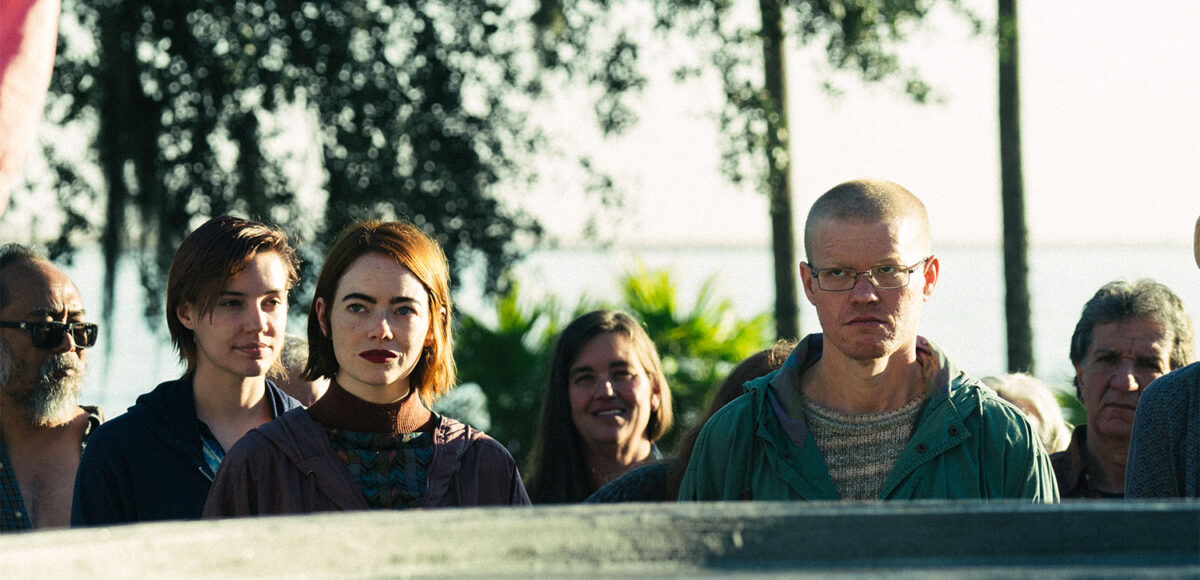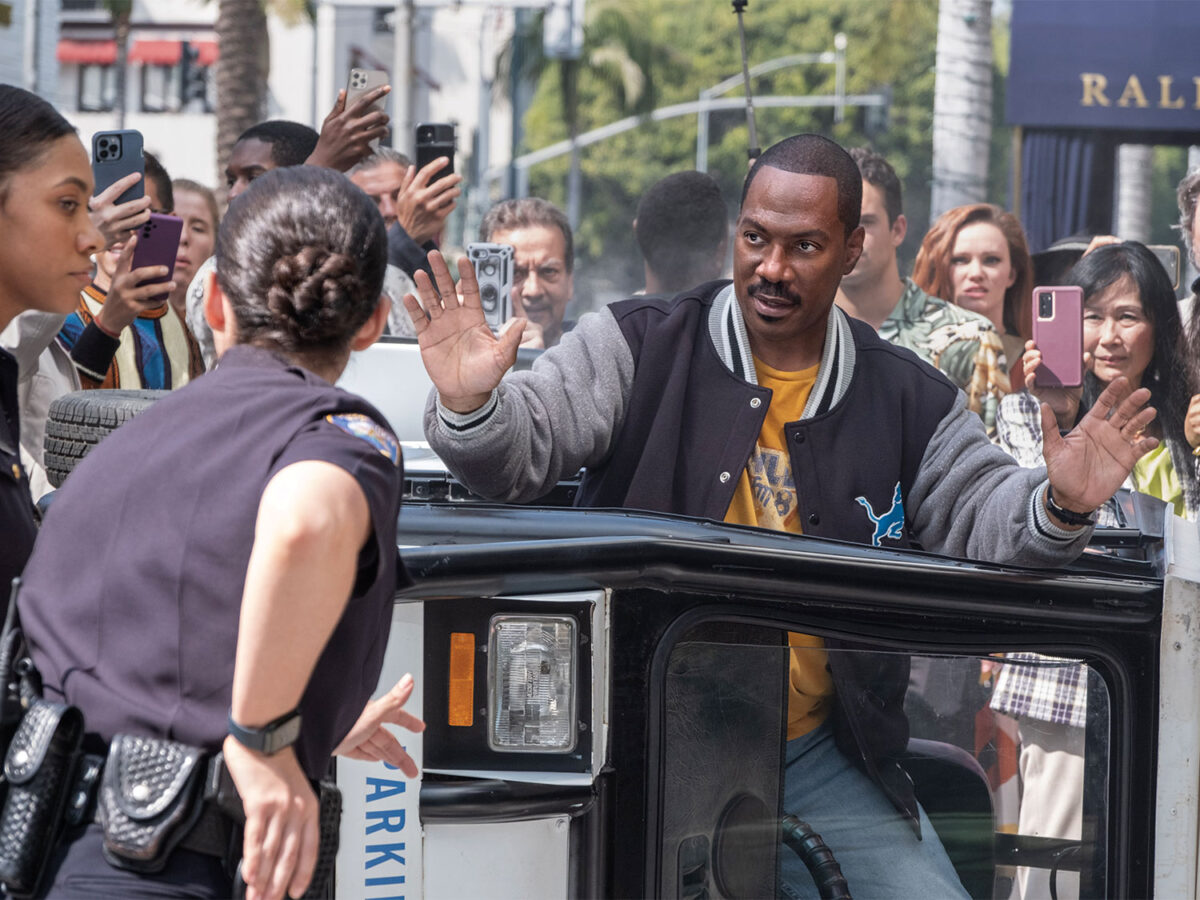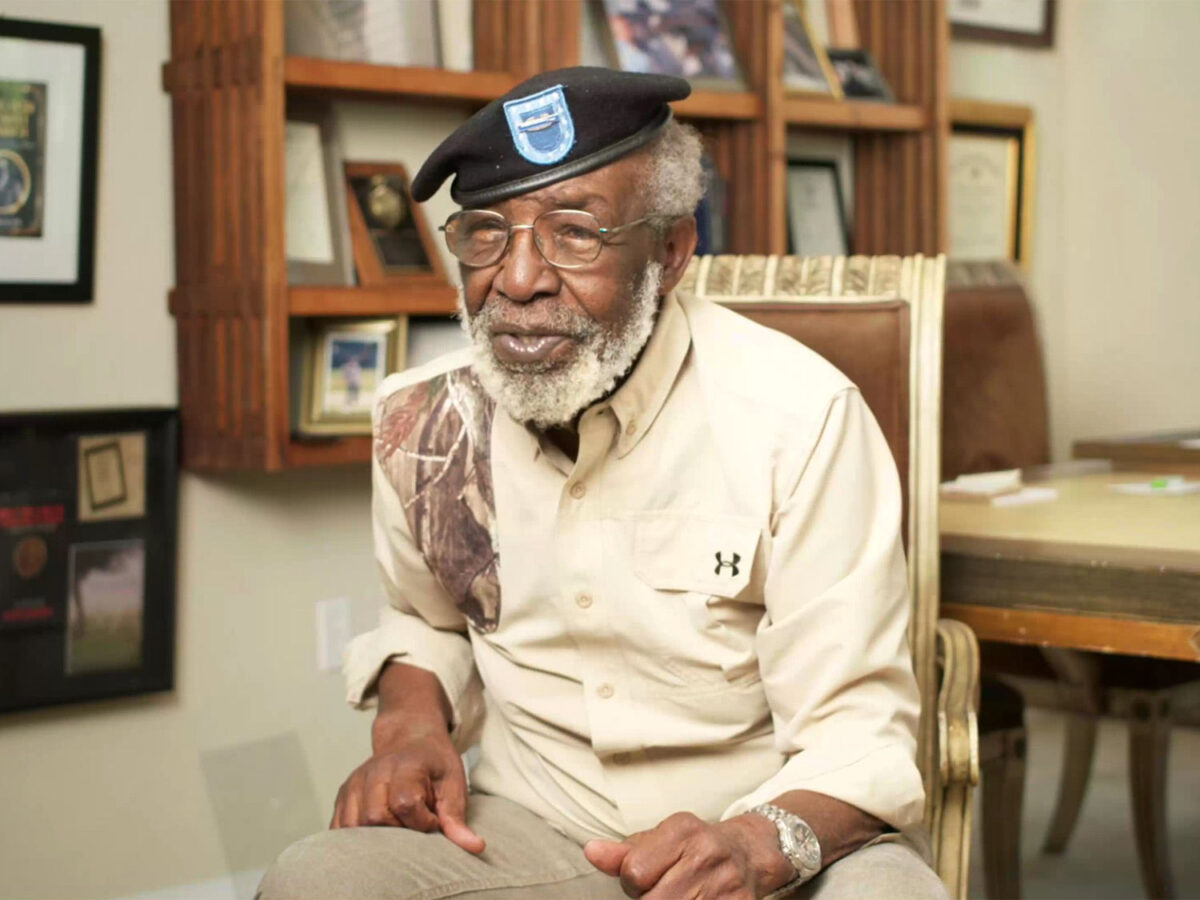Yorgos Lanthimos, the controversial critics’ favorite who directed “Poor Things,” lives by the statement “Sometimes you just need to be ridiculous in order to achieve what we’re trying to achieve.” “Kinds of Kindness,” his newest outing, is just that, ridiculous. What he was trying to achieve is still a mystery to me. Sure to be complicated as one slices and dices what appears on screen as three separate and disparate stories, this is something he calls a triptych. Adding a sense of continuity to the incongruity of the various narratives, Lanthimos uses the same actors playing different roles in each story; a repertory company for his anthology. Although he and his actors all have explanations for the ties between the three stories, whether it’s control, free choice, love, acceptance and/or loss, it will be up to you to decide whether or not these descriptions work.
Part I, entitled “RMF is Dying,” follows Robert (Jesse Plemmons), a seemingly successful businessman who works for Raymond (Willem Dafoe). But this is more than a boss-employee relationship. Robert’s entire life has been controlled by the dictates of Raymond. When, for the first time, Robert exercises choice, refusing the odious task assigned him, the consequences are dire. He is brought to his knees as he loses everything in his life.

Photos by Atsushi Nishijima courtesy of Searchlight Pictures
Part II, entitled “RMF is Flying,” follows Daniel (Plemmons), a blandly nice policeman, who is at wit’s end because his wife, Liz (Emma Stone), an intrepid scientific researcher, is missing and presumed dead in a boating accident while on a research trip. When she reappears, he is convinced that she is a substitute, sent to betray him. Continually reassured by his friends and her colleagues that she is, in fact, the original and not a doppelganger, he remains unconvinced and descends into a paranoid frenzy that doesn’t end well, at least not for the alleged “substitute” wife.
Part III, “RMF Eats a Sandwich,” revolves around Emily (Stone) who, along with fellow acolyte Andrew (Plemmons), follows the dictates of cult leader Omi (Dafoe). Emily and Andrew are on a quest to find a woman who can heal the dead. Emily, single minded of focus, is distracted when she is confronted by her husband and child. She has long since abandoned a life of domesticity, but her husband has other intentions, plans that will get her expelled from the cult. Finding the woman with the magic touch becomes paramount to Emily’s existence and
readmission to Omi’s circle.

Lanthimos is not really interested in telling a story, which works in his favor because the stories he tells are very slight. He is, however, interested in dissecting human nature, exploring the extremes of the human condition, most effectively in “RMF Is Dying” where the idea of free will is questioned. Does it really exist? Robert, who follows Raymond’s every command, still believes that he can exercise a choice. He never has in the past but is convinced that each and every action and reaction were his to make. By refusing Raymond, he triggers a series of events that upend his life and force him to reassess what is permissible. Has he exercised free will or fallen into a sinister trap that tests him as God tested Job?
It is apparent that Lanthimos has given his actors great latitude to improvise and explore their characters. Good for the actors; not so good for us. I like a good plot; actually, I’ll settle for any plot. Nevertheless, the concept of character as an exercise in creativity, freed from story, is not without interest. The outward trappings are subtle but telling. Robert in Part I is ostensibly a successful businessman. But look closely at his “tailored” suit and you will note that it doesn’t quite fit; it’s loose where it should be tight and snug where it should flow. Compare his attire with that of Raymond’s and it becomes more obvious because Raymond, impeccably attired, would look at ease on the pages of “GQ.” The imperceptibly ill-fitting suit goes along with the forced ease with which Robert carries himself. It’s a short distance between the successful, admired Robert and the increasingly distraught Robert who witnesses his entire life vanishing before his eyes.
The benignly threatening aspect of Omi in Part III is expressed primarily in the cadence of his speech and sureness of foot. Emily’s poorly fitting outfit, reminiscent of a traveling Seventh Day Adventist’s work attire, and wide-eyed astonishment identify her insecurities and neediness. But costume designer Jennifer Johnson must have loved working with Plemmons because his outfit is hilariously pitch perfect. Even before knowing the details of Omi’s beliefs, Andrew, with his buzz cut, empty gaze, few spoken words, cheesy T-shirts and high-water khaki pants, can be nothing but the blind follower of a cult, especially one that believes that the dead can be reanimated. He brought to mind a follower of Heaven’s Gate ready to be beamed up to the heavens on the word of his leader.

Photo by Yorgos Lanthimos courtesy of Searchlight Picture
It’s not always easy to see the humor that Lanthimos is aiming for. Much of the film would fit into the larger category of theater of the absurd, although this is not Samuel Becket-worthy by any stretch of the imagination. There are some laugh-out-loud moments, although, for me, they were few and far between. It is easier to recognize them from afar, after the film has been experienced. I say experienced because without discernible plots, many of the strengths of “Kinds of Kindness” are not immediately apparent. If one approaches it from the standpoint of an exercise in improv without the expectation of plot and story, then there is a brilliance within it. There is a very unscripted aspect to each part dependent almost entirely on the actors’/characters’ reaction to situation. Emma Stone, Lanthimos’s muse, is most at ease with this type of storytelling and shines. Plemmons, who won Best Actor at the Cannes Film Festival, gives the most anchored performance of the group. Dafoe, viewed as a straight man, propels forward whatever story is present. The other members of the repertory cast are also very good. Margaret Qualley lends an ethereal presence to all of her characters; Hong Chau and Mamoudou Athie anchor the various “storylines” with some semblance of verisimilitude. Joe Alwyn, the last member of the group, seems to have a thankless place-holder role with the exception of Part III, where he is the antagonist.
Did I like the film? No, not particularly. It’s long, obtuse and forced. Even the so-called RMF is an abstract concept. But, and this is a big but, it does have a genius for absurdity. The acting is outstanding but at more than 2 hours and 40 minutes, this, like much of the movie, will be relegated to cult status—more talked about than seen.
Opening June 21 at the AMC Century City 15, AMC Grove 14, AMC Burbank 16 and AMC Media Plaza.
Neely Swanson spent most of her professional career in the television industry, almost all of it working for David E. Kelley. In her last full-time position as Executive Vice President of Development, she reviewed writer submissions and targeted content for adaptation. As she has often said, she did book reports for a living. For several years she was a freelance writer for “Written By,” the magazine of the WGA West, and was adjunct faculty at USC in the writing division of the School of Cinematic Arts. Neely has been writing film and television reviews for the “Easy Reader” for more than 10 years. Her past reviews can be read on Rotten Tomatoes where she is a tomato-approved critic.







